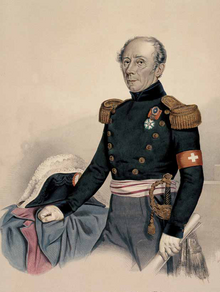
First aid is the first and immediate assistance given to any person with either a minor or serious illness or injury, with care provided to preserve life, prevent the condition from worsening, or to promote recovery until medical services arrive. First aid is generally performed by someone with basic medical training. Mental health first aid is an extension of the concept of first aid to cover mental health, while psychological first aid is used as early treatment of people who are at risk for developing PTSD. Conflict First Aid, focused on preservation and recovery of an individual's social or relationship well-being, is being piloted in Canada.

The organized International Red Cross and Red Crescent Movement is a humanitarian movement with approximately 16 million volunteers, members and staff worldwide. It was founded to protect human life and health, to ensure respect for all human beings, and to prevent and alleviate human suffering. Within it there are three distinct organisations that are legally independent from each other, but are united within the movement through common basic principles, objectives, symbols, statutes and governing organisations.

The Magen David Adom is Israel's national emergency medical, disaster, ambulance and blood bank service. The name means "Red Shield" or "Red Star of David". Since June 2006, Magen David Adom has been officially recognized by the International Committee of the Red Cross (ICRC) as the national aid society of the State of Israel under the Geneva Conventions, and a member of the International Federation of Red Cross and Red Crescent Societies. MDA has a dedicated medical emergency phone number in Israel, 101. MDA can become an auxiliary arm of the Israel Defense Forces during times of war. In 2022 MDA became academically affiliated with Ben Gurion University of the Negev.

The Canadian Red Cross Society is a Canadian humanitarian charitable organization, and one of 192 national Red Cross and Red Crescent societies. The organization receives funding from both private donations and from Canadian government departments.
The British Red Cross Society is the United Kingdom body of the worldwide neutral and impartial humanitarian network the International Red Cross and Red Crescent Movement. The society was formed in 1870, and is a registered charity with more than 17,200 volunteers and 3,400 staff. At the heart of their work is providing help to people in crisis, both in the UK and overseas. The Red Cross is committed to helping people without discrimination, regardless of their ethnic origin, nationality, political beliefs or religion. Queen Elizabeth II was the patron of the society until her death on 8 September 2022.
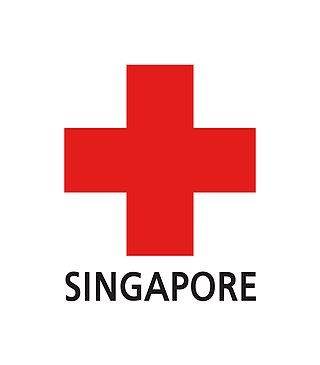
The Singapore Red Cross (SRC), formally the Singapore Red Cross Society, is a humanitarian aid and community services charity in Singapore. The SRC is a national member of the Federation of Red Cross and Red Crescent Societies (IFRC) and International Committee of the Red Cross (ICRC) and forms a part of the International Red Cross Movement.

The Hong Kong Red Cross is the national Red Cross society of Hong Kong as part of the International Red Cross and Red Crescent Movement. Its head office is in West Kowloon.

Swiss Air-Rescue is a private, non-profit air rescue service that provides emergency medical assistance in Switzerland and Liechtenstein. Rega was founded on 27 April 1952 by Rudolf Bucher, who believed that the Swiss rescue service needed a specialized air branch. Rega mainly assists in mountain rescues, but also operates in other terrains when necessary, especially in life-threatening emergencies. Rega also provides a repatriation and medical advice service for members who experience a medical emergency while abroad and local treatment is not available.

The Turkish Red Crescent is the Turkish affiliate of the International Red Crescent and the first worldwide adopter of the crescent symbol for humanitarian aid.
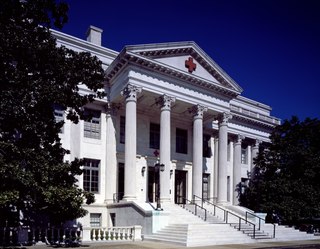
The American Red Cross (ARC), also known as the American National Red Cross, is a nonprofit humanitarian organization that provides emergency assistance, disaster relief, and disaster preparedness education in the United States. It is the designated US affiliate of the International Federation of Red Cross and Red Crescent Societies and the United States movement to the International Red Cross and Red Crescent Movement.
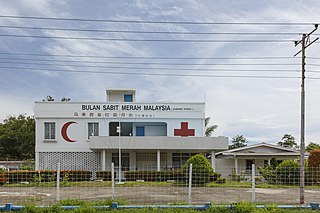
The Malaysian Red Crescent (MRC) is a voluntary humanitarian organization that seeks to promote humanitarian values, as well as provide service and public education in disaster management, as well as healthcare in the community. It is part of the International Red Cross and Red Crescent Movement.
St John Ambulance Ireland (SJAI), previously known as the St John Ambulance Brigade of Ireland, is a charitable voluntary organisation in Ireland. For constitutional reasons it is not a full member association of the Venerable Order of Saint John and the international St. John Ambulance movement, but rather is classed as an "associated body". The organisation is dedicated to the teaching and practice of medical first aid. It is engaged in first aid training to the public, providing first aid and ambulance cover at public events, patient transport and community services.
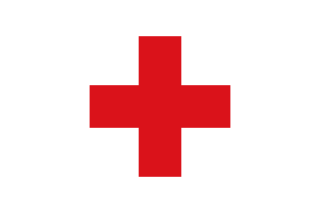
The Lebanese Red Cross (LRC) is a humanitarian organization and an auxiliary team to the medical service of the Lebanese Army. Its headquarters is in the Lebanese capital city of Beirut. Founded in 1945, the organization comprises a number of approximately 7,000 members/volunteers and 200 staff personnel. The society works with the International Federation and the ICRC, and on a bilateral basis with the Norwegian and the French Red Cross. The LRC also works with the relevant components of the Lebanese authorities, with UN agencies and NGOs.
The Sudanese Red Crescent (SRC) is the biggest and most decentralized and widespread humanitarian organization operating in Sudan. The society developed out of the Sudan branch of the British Red Cross Society and was established in 1956. Upon Sudan's independence in March 1956 received official recognition as an independent National Society following the Sudanese Council of Ministers decree No. 869. The National Society covers nearly the entire country with 15 State branches and several sub-branches/units in the provinces/localities and administrative units, with a nationwide community-based network of 35,000 active volunteers and another 300,000 who can be deployed as need arises. It has well-established working relations with public authorities at federal, state and local levels, and good partnership and collaboration with Movement partners and UN specialized agencies and national and international NGOs working in Sudan.
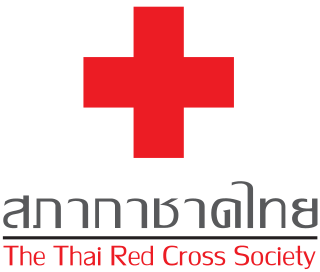
The Thai Red Cross Society is a major humanitarian organisation in Thailand, providing services as part of the International Red Cross and Red Crescent Movement.

The Finnish Red Cross is an independent member of the International Federation of Red Cross and Red Crescent Societies, which is one of the biggest and best-known international organisations in the world and in the field of humanitarian aid. FRC has over 71,000 members and around 30,000 active volunteers in Finland. FRC consists of 12 regional chapters and 433 local branches throughout the country. The current General Secretary is Eero Rämö. At the end of 2022, the FRC employed 787 people, of which 204 worked at the headquarters in Helsinki.

Johanniter-Unfall-Hilfe e.V., commonly referred to as Die Johanniter, is a voluntary humanitarian organisation affiliated with the Brandenburg Bailiwick of the Order of St John, the German Protestant descendant of the Knights Hospitaller. The organisation was founded in 1952 in Hanover under the leadership of Rudolf Christoph Freiherr von Gersdorff. One of the main reasons for its creation was the rise in injuries and deaths from road traffic accidents. JUH participates in international aid efforts together with its sister organisations in other countries as part of the Johanniter International partnership; it also works with the German Malteser Hilfsdienst, affiliated to the Catholic Sovereign Military Order of Malta. As of 2017 the organisation had 37,000 active volunteers and youth members and around 1,300,000 registered members.
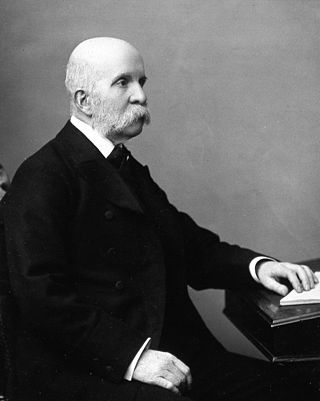
Sir John Furley, CH, CB was an English humanitarian who worked to improve medical care both in wartime and at home. He was an active member of the Red Cross from its foundation, and one of the founders of St John Ambulance Association, set up to promote first aid training. He travelled to Paris and South Africa to bring humanitarian supplies, and also produced various inventions to help the wounded, including some types of stretcher. He received a knighthood and Order of the Companions of Honour for his charitable works.

The Mexican Red Cross is a non-governmental humanitarian assistance organization affiliated with the International Federation of Red Cross and Red Crescent Societies to help those in dangerous situations, such as natural disasters, as well as providing human health services. The organization finances its aid, assistance, and education programs through the work of thousands of volunteers and donation from individuals, institutions, organizations, associations and companies. It originated with a presidential decree in 1910 and was recognized internationally in 1912. Today it participates in national and international aid and disaster relief missions as well as various health services, training in first aid and for emergency medical technicians. Early in its history, it developed a program in nursing, which eventually became the Escuela Nacional de Enfermería y Obstetricia, today part of the National Autonomous University of Mexico.
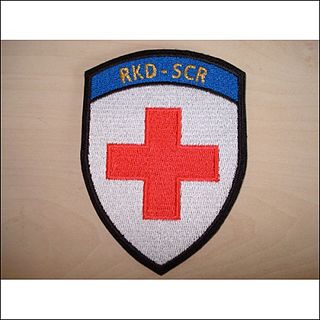
The Red Cross service is since 1903 a department of the Swiss Red Cross. It consists of approximately 300 women with qualified medical training in voluntary military service in support of the medical service in the Swiss Armed Forces, founded by Henry Dunant Red Cross traditions.

